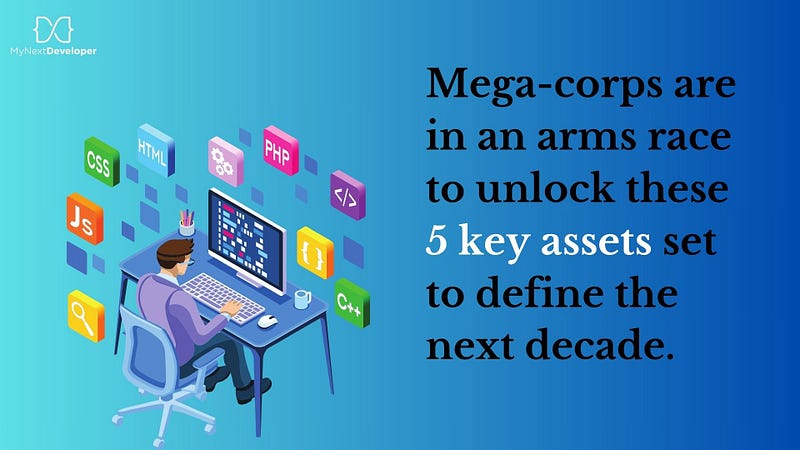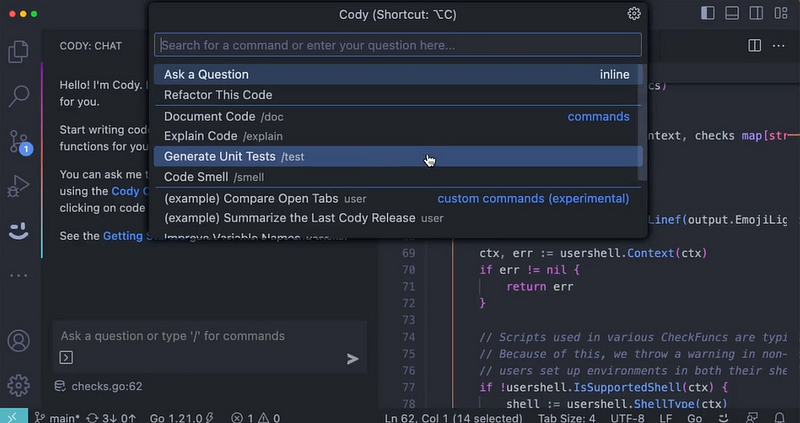No-Code Development: The Key to Democratizing App Development
No-Code Development: The Key to Democratizing App Development

Introduction to no-code development
The demand for mobile applications is rapidly increasing in today’s digital era. Many businesses, entrepreneurs, and individuals are interested in creating their apps, but traditional app development can be complex, time-consuming and expensive.
No-code development provides a solution to this problem by enabling people without programming knowledge to create software applications using simple visual interfaces and drag-and-drop tools. This democratization of app development is allowing more people to bring their ideas to life, unleashing a new wave of creativity and innovation.
The rise of no-code development platforms
No-code development platforms have been gaining significant traction in recent years. These platforms provide users with a range of pre-built components and templates that can be easily customized to create fully functional applications. By eliminating the need for coding, no-code platforms empower users to focus on the design and functionality of their apps, rather than getting caught up in the technicalities.
The popularity of no-code development platforms stems from their user-friendliness and ease of access. They offer an intuitive user experience, with drag-and-drop interfaces that make app development a breeze. Additionally, these platforms often come with built-in functionalities such as database management, user authentication, and data storage, further simplifying the process. With no-code platforms, even those with no technical background can create sophisticated and professional-looking apps.
Benefits of no-code development
No-code development brings a plethora of benefits to app creators and businesses alike. Firstly, it drastically reduces the time and cost involved in app development. Traditional development processes can take days or even months, requiring a team of skilled developers and extensive resources. With no-code platforms, apps can be built within days or weeks, allowing businesses to quickly adapt to changing market demands.
Moreover, no-code development is a technology that enables individuals to take control of their ideas and turn them into reality. It eliminates the need for reliance on external developers, giving app creators full autonomy and flexibility. This not only saves costs but also allows for faster iterations and updates. With the ability to make changes in real-time, app creators can respond to user feedback and continuously improve their applications.
No-code vs. low-code development
While no-code development is gaining popularity, it is important to understand the distinction between no-code and low-code development. Low-code development also aims to simplify app development by providing a visual interface and pre-built components. However, unlike no-code development, low-code still requires some level of coding knowledge to customize and extend the functionalities of the app.
Low-code development is often favoured by organizations that have developers with some coding experience. It offers more flexibility and customization options, allowing for the integration of custom code when needed. On the other hand, no-code development is ideal for individuals or small businesses who have little to no coding experience. It provides a more streamlined and beginner-friendly approach to app development.
The democratization of app development
One of the most significant impacts of no-code development is the democratization of app development itself. Previously, only those with technical skills and resources could develop apps. This created a barrier to entry and prevented many innovative ideas from seeing the light of day.
No-code development breaks down this barrier by making app development accessible to everyone. It levels the playing field and allows individuals, regardless of their technical background, to create apps that solve real-world problems. This democratization of app development is enabling individuals and small businesses to compete with established players in the market, growing a new wave of entrepreneurship and innovation.
How no-code development is changing the industry
No-code development is disrupting the app development industry in several ways. Firstly, it is democratizing the process, as mentioned earlier. This democratization is leading to a surge in app creation, with a wide variety of apps being developed for different purposes and industries. From e-commerce platforms to productivity tools, the possibilities are endless.
Furthermore, no-code development enables rapid prototyping and iteration. With the ability to quickly build and test app ideas, developers and entrepreneurs can validate their concepts before investing significant resources. This reduces the risk associated with app development and allows for faster iterations based on user feedback.
Examples of successful no-code apps
Numerous successful apps have been developed using no-code platforms, showcasing the power and potential of this approach. One such example is Bubble, a platform that allows users to build fully functional web and mobile applications. Bubble has been used to create a wide range of apps, including marketplaces, social networks, and productivity tools.
Another notable example is Adalo, a platform that specializes in creating mobile apps. Adalo has empowered individuals and businesses to create apps for various purposes, such as event management, fitness tracking, and e-commerce. These successful apps serve as proof that no-code development is not only possible but can also lead to highly functional and visually appealing applications.
How to get started with no-code development
If you’re interested in diving into the world of no-code development, there are a few steps you can take to get started.
STEP- 1: Understand the basics of no-code tools: No-code platforms like Bubble, Appian, Zoho Creator, and Flutter Flow allow you to build apps visually without needing to write code. Spend time learning how these drag-and-drop platforms work.
STEP- 2: Pick your no-code platform: Evaluate different options and choose one aligned with your needs. Bubble is great for web apps, Appian for enterprise apps, and Flutter Flow for building mobile apps with Flutter.
STEP- 3: Start with simple projects: Build basic CRUD apps to get familiar with your chosen platform. For Flutter Flow, you could start with a simple to-do list or weather app. Follow tutorials as needed.
STEP- 4: Add more advanced features: Once comfortable, experiment with advanced functionality like third-party integrations, automation, and data modelling. Flutter Flow has plugins for things like payments, chat, machine learning, etc.
STEP- 5: Deploy and iterate: Deploy early and often. Use real-world testing and analytics to enhance your apps over time. Flutter Flow allows you to deploy to Android, iOS, and web.
STEP- 6: Consider supplementing with code: While no-code tools are visual, learning JavaScript, CSS, Flutter, etc can help customize further. Consider using no-code platforms as a starting point to learn coding.
Take advantage of these resources and immerse yourself in the world of no-code development.
No-code development platforms to consider
There are several no-code development platforms worth considering, depending on your specific needs and preferences. One popular platform is Bubble, known for its flexibility and extensive feature set. Adalo, as mentioned earlier, specializes in mobile app development and offers a user-friendly interface.
Another platform to consider is Glide, which focuses on creating mobile apps from Google Sheets. Glide allows users to turn spreadsheets into functional apps with ease. Other notable platforms include OutSystems, AppSheet, and Thunkable, each offering unique features and capabilities.
Challenges and limitations of no-code development
Although no-code development has several advantages, it also has some challenges and limitations. One of the significant challenges is scalability. No-code platforms are typically designed for building small to medium-sized apps, which makes them less suitable for complex enterprise-level applications. As your app grows and requires more advanced functionalities, you may need to switch to a low-code or custom development approach.
Another limitation of no-code platforms is the lack of customization options available. While no-code platforms offer various templates and components, they may not always meet your app’s specific design or functionality requirements. This can limit your ability to create truly unique and tailored applications.
The Future of app development and the Role of no-code
The future of app development is closely linked with the increasing popularity of no-code development. As more individuals and businesses realize the power and accessibility of no-code platforms, the demand for such tools will continue to grow. We can expect to see advancements in the capabilities of no-code platforms, enabling the creation of more complex and scalable applications.
No-code development also has the potential to bridge the gap between technical and non-technical individuals. By empowering non-technical users to create apps, it encourages collaboration and innovation across different domains. This collaborative approach to app development holds great promise for the future.
Conclusion
No-code development is revolutionizing the app development industry, democratizing the process and empowering individuals to bring their ideas to life. With its simplicity, accessibility, and cost-effectiveness, no-code development is changing the way apps are created and opening doors to innovation. Whether you’re a small business owner, an aspiring entrepreneur, or someone with a great app idea, exploring the world of no-code development can unlock endless possibilities.
If you’re ready to embark on your no-code development journey, start by researching different no-code platforms and finding one that aligns with your needs. Engage yourself in tutorials and online communities, and don’t hesitate to try new things and make changes until you find what works best.
Ready to build your tech dream team?
MyNextDeveloper is the perfect solution for startups seeking to grow their team or build a product from an idea. We have handpicked a network of India’s top 3% software developers, each pre-screened for competence and driven by a passion for innovation. With our help, you can say goodbye to talent shortages and have access to a vibrant pool of knowledgeable professionals eager to bring your idea to life.
MyNextDeveloper is a one-stop shop for all your software talent needs, whether it’s on-demand, dedicated, or from conceptualization to launch. Head to our website to get started, and let’s collaborate to build your ideal team.





